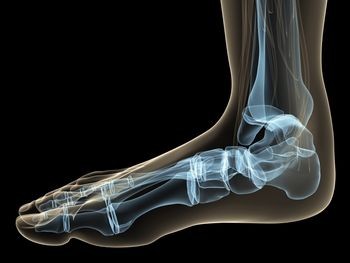The body must absorb a high amount of impact when walking. The leverage caused by walking magnifies a person’s body weight to two to three times its resting force. The average person takes about 3,000 steps per day (with an active person taking up to 10,000 steps). So as you can see there is a potential to for problems if biomechanics are off.
When you step correctly, your foot should absorb a lot of shock. With each step your foot should come into contact with the ground heel first. Then you arch begins to flatten or roll in – this helps absorb the impact of the step. After the foot has flatten (to varying extents), the foot muscles contract and the arch is reformed as weight is brought forward to the ball of the foot and then to the toes for a final push-off.
The foot must move freely in order to absorb shock. If your feet are healthy with proper posture you can walk properly (or run) with bare foot as nature intended. However, a number of people have issues with the arch in their feet which creates problems further up the body.
There is underpronation if your arches do not roll inward far enough and properly absorb shock (also known as high arched). When the shock isn’t absorbed by the feet it is radiated up the body to the knees, hips and back. Since there aren’t a lot of muscles in the knees and hip a lot of this impact is absorbed by the low back and pelvis muscles.
Overpronation (or flat foot) is created when your arches roll too far inward (or are permanently flat). Flat arches don't allow for proper shock absorption, which also sends the impact to other places in the body, potentially causing pain and low back problems.
Exercise, the use of special shoes or orthotics can help alleviate flat foot or high arch problems.
